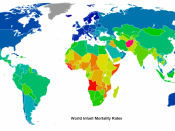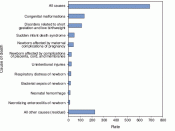Inequalities in health exist, whether measured in terms of mortality, life expectancy or health status; whether categorised by socioeconomic measures or by ethnic group or gender. Recent efforts to compare the level and nature of health inequalities in international terms indicate that Britain is generally around the middle of comparable western countries, depending on the socioeconomic and inequality indicators used. Although in general disadvantage is associated with worse health, the patterns of inequalities vary by place, gender, age, year of birth and other factors, and differ according to which measure of health is used.
Death rates have been falling over the last century, from a crude death rate of 18 per thousand people in 1896 to 11 per thousand in 1996. Over the last 25 years, there have been falls in death rates from a number of important causes of death, for example lung cancer (for men only), coronary heart disease and stroke.
Life expectancy has risen over the last century, but not all life is lived in good health. Healthy life expectancy - the measure of average length of life free from ill health and disability - has not been rising; the added years of life have been years with a chronic illness or disability, also the proportion of people reporting a limiting long standing illness has risen from 15 per cent to 22 per cent since 1975 and the proportion reporting illness in the two weeks previous to interview has nearly doubled from 9 per cent to 16 per cent. There is a slight increase in the proportion of people consulting the NHS.
A number of different measures can be used to indicate socioeconomic position. These include occupation, amount and type of education, access to or ownership of various assets, and indices based on residential area characteristics. There...


